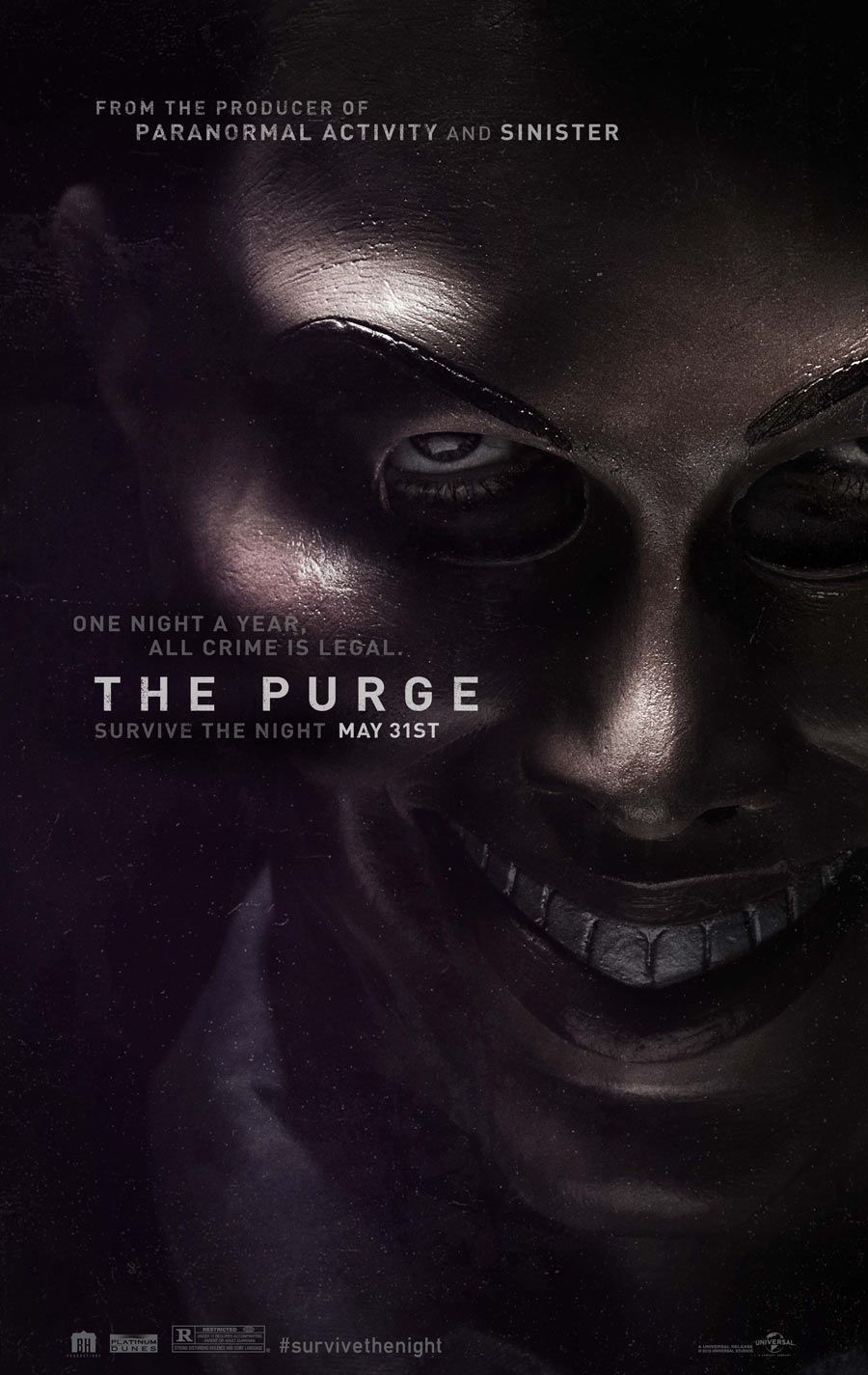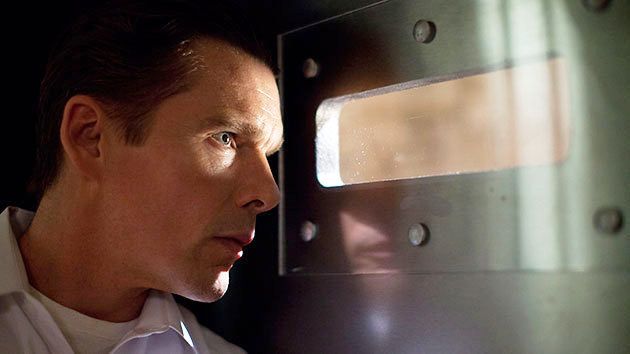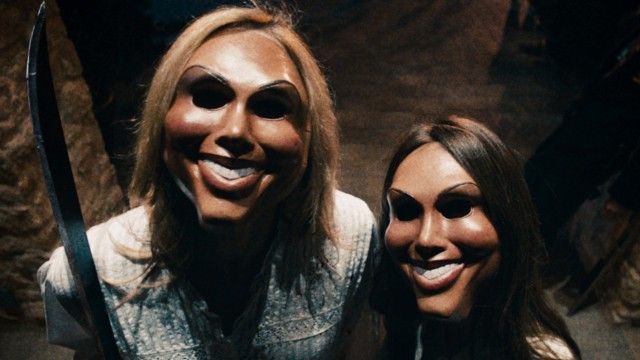If there's a difference between a good idea for a movie and a good movie itself, The Purge defines it. The sort of speculative-fiction story that would have been popular during the 1970s, writer-director James DeMonaco's second directorial effort asks plenty of provocative questions about America's obsession, and validation, of violent acts. But its execution bears more of the hallmarks of lackluster horror films than superlative social parables, offering nothing more than a noisome portrait of mindless (and pointless) brutality writ large against a promising concept it quickly abandons.
Ethan Hawke (Before Midnight) plays James Sandin, a successful businessman who made a fortune selling security systems to his upscale neighbors in preparation for “The Purge,” an annual government-sanctioned event where citizens are permitted to commit any criminal act -- including murder. On the night of the Purge, James, his wife Mary (Lena Headey) and two kids Charlie (Max Burkholder) and Zoey (Adelaide Kane) raise steel walls around their house and settle in for a quiet night while the rest of society tears itself apart. But when Charlie lets an ailing fugitive (Edwin Hodge) into their house, the Sandins find themselves terrorized by a group of mask-wearing college kids who will stop at nothing to retrieve their designated victim -- even if it means killing their family to get to him.
While it's an easy premise to dismiss, there's something undeniably thought-provoking about the basic idea of The Purge: how many people would indulge in their worst impulses if they were given carte blanche to do so during one 12-hour period, once every year? The film engages this with gleeful abandon, showcasing an infinite variety of atrocities just during the film's opening credits. But DeMonaco's moral quandary -- and later, social commentary -- is effectively forgotten as soon as the opportunity arises for facile jump scares and escalating implausibilities.
For example, the Sandins' do-nothing attitude about The Purge is an intriguing sign of their acceptance of state-imposed class genocide (the wealthy can afford protection and elected officials enjoy impunity, while the poor are targeted as recipients of the country's collective rage). But the filmmakers quickly grow disinterested in such ambiguities and turn to the fleeting and superficial thrills of having intruders appear out of nowhere to attack family members.
That DeMonaco never establishes any sort of geographic foundation for the various rooms in the Sandin house is annoying enough; it's impossible to know how close or far a destination is from another one even just enough to conjure a little “will he or won't he make it?” style suspense. But the members of the Sandin family seem improbably disinterested in staying together for more than a few minutes at a time, even after the intruders have cut the power and infiltrated the house. As with the doomed victims of so many awful slasher films, the Sandins' collective stupidity undermines any real possibility of true concern for them, while their cheaply visceral pursuit by the home invaders undercuts the complexity of the culture that gave birth to both the perpetrators and would-be victims' behaviors.
As a concerned father and mother desperately coming to terms with the cost of protecting their children in an unforgivingly violent society, Hawke and Headey shuffle through the emotional responses designated to them by the script without adding extra dimensionality or substance. And as their kids, Burkholder and Kane offer plot-necessitated character types who never become believable, much less sympathetic. Only Rhys Wakefield, as the intruders' chilling preppie “leader,” demonstrates any spark of energy or fearsomeness, although it's possible he stands out because, one, he's the only bad guy with an identity, and two, he borrowed that identity from one of the two unceasingly polite-but-terrifying antagonists in the much better Funny Games.
The plot strands which peter out, unfold arbitrarily or are otherwise never resolved are too numerous to count here, but the worst offense the film commits is in making even its best idea seem bad: at the beginning, DeMonaco's film examines the prospect of a culture willing to sacrifice its ideals in order to preserve its existence, but at the end, it's an empty-headed and violent portrait of cult-like brainwashing.
Ultimately, when the Sandins are trying to convince themselves that they're doing the right thing by ignoring, accepting or even profiting off of state-sanctioned murder, The Purge works. But when the filmmakers are trying to convince us to ignore our misgivings, accept the Sandins as heroes, and accept glib brutality as galvanizing philosophical punctuation, it doesn't. And the problem is that audiences will feel so beaten down physically and emotionally by the latter effort that they'll completely forget about the former, which effectively will make viewers feel like they've taken part in the Purge themselves -- unfortunately, as victims rather than perpetrators.



